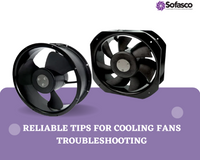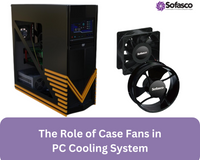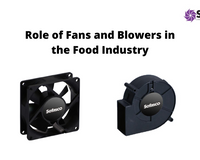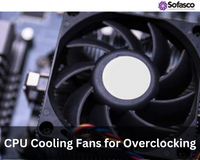Airflow dynamics play a critical role in equipment cooling, especially when using square fans. By understanding these dynamics, you can optimize cooling efficiency, reduce heat-related risks, and prolong equipment lifespan. Here's an overview of key concepts and considerations for effective airflow management with square fans.
Airflow refers to the movement of air through a space, driven by pressure differentials created by fans or natural ventilation. In the context of equipment cooling, airflow is essential for dissipating heat generated by electronic or mechanical components.
Airflow Patterns
- Linear Flow: Air moves in a straight line from one point to another. Ideal for systems with direct cooling needs, like server racks with exhaust fans.
- Circular Flow: Air circulates within an enclosed space, often created by multiple fans working together. This pattern can be useful for even temperature distribution.
- Cross Flow: Air moves across a surface, typically from intake to exhaust. This flow is common in electronics cooling, where air moves over heat sinks or other cooling components.
Key Factors in Airflow Dynamics
- Static Pressure: The pressure exerted by stationary air within a system. Higher static pressure is needed to push air through dense equipment or against resistance.
- Air Velocity: The speed at which air moves. Faster airflow typically means better cooling, but may also lead to increased noise and turbulence.
- Airflow Rate: Measured in cubic feet per minute (CFM), this indicates the volume of air a fan moves per minute. Higher CFM generally means better cooling capacity.
- Turbulence: Unwanted air movement that disrupts airflow patterns. This can lead to inefficient cooling and noise.
Optimizing Airflow with Square Fans
- Fan Placement: Position fans to create efficient airflow paths. For example, place intake fans at the front and exhaust fans at the rear to create a linear flow.
- Balancing Intake and Exhaust: Ensure a balance between incoming cool air and outgoing hot air. Imbalances can create negative or positive pressure, affecting cooling efficiency.
- Fan Size and Speed: Choose fans that provide adequate airflow for your equipment's cooling needs. Larger fans typically move more air at lower speeds, reducing noise.
- Use of Filters and Grilles: Filters and grilles can influence airflow by introducing resistance. Ensure they are clean and designed for minimal impact on airflow.
- Ducting and Ventilation: Use ducts to direct airflow and minimize turbulence. Proper ventilation ensures heat is expelled from the system efficiently.
Type of Equipment Cooling Fans
Axial Fans: Axial fans have blades rotating around a central axis, directing air in parallel. They produce high airflow with lower static pressure, making them ideal for computers, servers, and general cooling. These fans are quiet and energy-efficient, suitable for environments with minimal airflow resistance.
Centrifugal Fans: Centrifugal fans feature blades at right angles to the shaft, pushing air perpendicularly. This design creates high static pressure, allowing air to move through resistance, such as ducts or enclosed spaces. They are often used in industrial and HVAC systems where higher pressure is required.
Blower Fans: Blower fans are a type of centrifugal fan with a curved housing for specific directional airflow. They generate high static pressure and are ideal for targeted cooling in electronics or HVAC systems. Blower fans are used in situations where air needs to be directed through confined spaces.
Cross-Flow Fans: Cross-flow fans have cylindrical blades creating a wide, uniform airflow. This design allows for even air distribution with moderate static pressure, ideal for air conditioning and small appliances. They are commonly used to cool circuit boards and heat exchangers, requiring even airflow.
Considerations for Equipment Cooling
- Heat Sources: Identify the primary heat sources within the equipment. This helps determine the best fan placement and airflow patterns.
- Temperature Monitoring: Use sensors to monitor temperatures at key points within the system. This data can guide adjustments to fan speed, placement, and airflow patterns.
- Environmental Factors: Consider ambient temperature, humidity, and dust levels, as they can impact airflow dynamics and cooling efficiency.
- Noise Reduction: If noise is a concern, opt for fans with lower RPMs and consider noise-dampening materials to reduce vibration and turbulence noise.
Upgrade your equipment cooling with the perfect fan solution! At Sofasco, we offer a wide range of electronics equipment’s cooling fans designed to meet your specific needs, from high-performance axial fans to powerful centrifugal blowers. Contact us now to explore our selection and find the ideal fan to keep your equipment running cool and efficiently.












